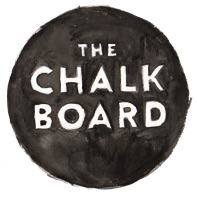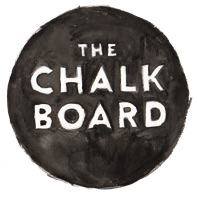Most of us know someone who always seems to be in the middle of a crisis—or maybe we recognize that pattern in ourselves. The constant highs and lows, the emotional reactivity, the whirlwind that seems to follow certain people wherever they go—it can feel like life is one big performance. But what if that need for intensity isn’t just personality, but a form of addiction?
In Addicted to Drama: Healing Dependency on Crisis and Chaos in Yourself and Others, psychologist Scott Lyons, PhD, cracks open the psychology behind our culture’s fixation with drama—what it masks, where it comes from, and most importantly, how to heal from it.
In this powerful excerpt, Lyons helps us spot the monster in the closet, recognize when we’ve become dependent on chaos, and begin the journey toward nervous system regulation, real connection, and true belonging.
Let’s take a look inside the healing process—and what it really means to arrive.
A Look At The Monster In The Closet With Scott Lyons, PhD
I n surveying individuals who self-identify with addiction to drama, those who identify others in their life with the propensity for being addicted to drama, and clinical psychologists who work with such people, I began to notice familiar comments and themes:
n surveying individuals who self-identify with addiction to drama, those who identify others in their life with the propensity for being addicted to drama, and clinical psychologists who work with such people, I began to notice familiar comments and themes:
+ Drama can be defined as the “unnecessary” turmoil and chaos in one’s life or the world.
+ It’s easy to recognize dramatic behavior but harder to define drama.
+ Drama is dissonance between an incoming stimulus and the response it produces. A mismatch and exaggeration between external circumstances and internal reactions.
Drama, when used as an adjective (dramatic) has been described as a whirlwind—internal for the dramatic person and external for those around this person. For the person craving or creating drama, there is a sense of intensity that feels like an inner warfare. This whirlwind and inner warfare is the world dramatic people live in, and how they perceive and engage in the outer world. It is an internal experience of—and need for—extreme experience. Something is either hot or cold, black or white. No middle ground exists.
Drama, as a noun, is more amorphous and poorly defined. It is defined by external circumstances, interpersonal interactions, and the perception of and response to the combination of circumstances and interactions. One participant in my research study defined drama as “life-changing things that I have to deal with all by myself.” For yet another person, drama was “the big things that have happened in life in which everybody drops everything and they shout at each other.”
But we all react to stressful or difficult situations, so how does one determine the line between a normal response and a dramatic reaction that may suggest an addiction to drama? We humans have evolved to be responsive to internal and external stimuli, but if the dramatic intensity is habitual rather than short term or adaptive, and if chaos and crisis appear to dominate the person’s life, an affinity for drama is likely.
The Milestones Of Healing Dependency On Crisis And Chaos
Let’s look at the actual process of healing. While healing is not linear, there are clear milestones along the journey. The process of healing an addiction to drama is a process of reestablishing safety, being present in one’s body, expressing the authentic self, growing capacity to be seen and in connection (intimacy), and affirming a sense of belonging.
Since the nervous system of someone addicted to drama has been geared up to expect a threat, disabling the alarm system that seeks, escalates, and creates drama is a threat all unto itself. As you find trusted people, mentors, friends, or therapists that meet you where you are and receive you, little by little you let go of making stories, throwing logs on the fire for intensity, and pulling people in and pushing them away—all the while being met with compassion. This is the foundation that over time reestablishes that you can be safe and feel belonging without the suffering and drama.
The five stages or milestones of healing are:
1) Awareness
2) Action
3) Arrival
4) Letting go
5) Belonging
These stages build upon one another and will offer you a way of tracking your own progress along the healing journey.
A Path Through The First Three Stages Of Healing
 STAGE 1: AWARENESS Before the stage of awareness, you are operating without consciousness of your adaptive survival strategies. These patterns that formed the addiction to drama are in the driver’s seat of your life; and the strife and recurring challenges seem to only be coming at you, as opposed to germinating from you. Awareness is the stage that begins to illuminate what has been in the shadows. In the stage of awareness, you are building the capacity to be a compassionate witness without being pulled into your own or someone else’s pain and suffering. It takes fortitude to become aware of the addiction and what lies beneath it.
STAGE 1: AWARENESS Before the stage of awareness, you are operating without consciousness of your adaptive survival strategies. These patterns that formed the addiction to drama are in the driver’s seat of your life; and the strife and recurring challenges seem to only be coming at you, as opposed to germinating from you. Awareness is the stage that begins to illuminate what has been in the shadows. In the stage of awareness, you are building the capacity to be a compassionate witness without being pulled into your own or someone else’s pain and suffering. It takes fortitude to become aware of the addiction and what lies beneath it.
In this first stage, you are beginning to shine light on how the core pain has manifested in the way that you are perceiving and acting in the world. Awareness may rise from asking yourself contemplative questions; looking for patterns in your thoughts, feelings, and behaviors; or perhaps getting feedback from trusted people. It may feel jarring and frustrating for some time as you begin to take notice of how often you are disconnecting from yourself or others or stirring things up. Just know you are not broken, you are not your behavior—you are simply in the stage of recognizing your own survival strategies. One of the most helpful tools for awareness is to bring curiosity to whatever you are attending to—it opens the gateways for discovery.
The following are five ways to bring awareness to primary areas of addiction to drama in this stage:
1) Pay attention to where and when there is aliveness, connection, and presence to your body—and when there is not. Notice when there is a disconnect to yourself. This may look like being “spaced out” and detached from your body and feelings, being on autopilot, being confused about what is really happening within you or around you, or watching your life from outside of your body as if it were happening on a movie screen (dissociation).
2) Witness your behaviors and thoughts and begin to take ownership for what is happening around you. Listen closely for the running scripts in your mind that are fueling what you are focusing on and reacting to. Notice how your stories stimulate your exaggerated emotions, and how those emotions fuel the continuation of the story. Recognize how often you are retelling the same story to yourself and others. Observe how much time and energy is being used to justify and validate those thoughts, feelings, and beliefs.
3) Notice the uneasiness around stillness and ease. There will be cravings to fill or distract from that uneasiness. Recognize all the various ways you personally exacerbate a situation to create more activations and agitation, and less settling, repeatedly throughout the day.
 4) Notice when you allow your emotions to move through you, and when you hold on to them and recycle them as a means of staying activated. Some of the greatest advice I ever received regarding emotions is that emotions are meant to be in motion, and when they are not, they are suppressed. A single wave of an emotion lasts thirty to ninety seconds, and anything after that is a story. Become aware of the emotions you default to and the ones you tend to avoid. This goes for needs (e.g., safety, attention, etc.) as well. You may recognize which of your needs are overshadowed by the intensity of your emotions.
4) Notice when you allow your emotions to move through you, and when you hold on to them and recycle them as a means of staying activated. Some of the greatest advice I ever received regarding emotions is that emotions are meant to be in motion, and when they are not, they are suppressed. A single wave of an emotion lasts thirty to ninety seconds, and anything after that is a story. Become aware of the emotions you default to and the ones you tend to avoid. This goes for needs (e.g., safety, attention, etc.) as well. You may recognize which of your needs are overshadowed by the intensity of your emotions.
5) Notice your interactions in different relationships (partners, friends, strangers, community, etc.). Bring your attention to how activation manifests itself, such as when you close off and push people away or as a means to pull people in and feel more connected. You might notice how often you feel conflict or strain in relationships, and how feeling hurt can often escalate to the perception of being harmed. How a small scratch is interpreted as a deep, bloody wound. Observe how often you feel alone or lonely in the presence of others. Become aware of judging, criticizing, and blaming yourself and others as a means of avoiding feelings and needs.
STAGE 2: ACTION As you become more aware of the patterns around your addiction to drama, and have made the choice for change, the action stage begins. Action is addressing the behavior of an addiction to drama by utilizing the many practices and therapeutic techniques that can support change.
These include the following:
+ Slowing down
+ Meditation and embodiment practices
+ Staying present in your body as feelings arise
+ Taking pause and moments of stillness
+ Prioritizing rest and recuperation
+ Expressing basic feelings and needs
+ Receiving connection, validation, feedback, and intimacy
+ Flexibly moving between states, such as between activation and settling (also known as sympathetic and parasympathetic nervous systems)
+ Discerning fact from fiction in thoughts and stories
+ Shifting from narrow thinking to seeing choices, nuances, and optionality
This stage often feels like wrestling with the compulsion of the addiction so as to make space and address underlying pain and unprocessed trauma. In this stage, you are finding the ability to move into the whirlwind and track your way back out. As you learn to settle, it is normal to find yourself replacing one revving for another. It will take time and repeated practice to remain settled without revving back up. While confronting your ingrained thought and behavior patterns is hard work, this stage is necessary for healing and deep change to take place.
STAGE 3: ARRIVAL In the first stage of “awareness,” you were building the capacity to witness and watch your own behaviors, needs, impulses, and actions to be able to shift your focus from other people or situations back onto yourself. In the second stage, you have created enough space between revving to begin to address the underlying pain and trauma. Getting to this milestone of “arrival” means you will feel a sense of power from occupying and being present in your body—instead of relying on the false sense of power derived from crisis and chaos. Life becomes richer and more colorful as you arrive into yourself. Feelings become deeper and more nuanced, as opposed to general, intensified, and exaggerated.
With enough trust, support, and safety, you are able to contact the core hurt underlying the behavior through four phases: explore the benefit, find the missing needs, find the belief, and meet the pain.
1) Explore the benefit of the addiction to drama. Start with asking yourself the following questions:
+ What have been the short-term gains of drama?
+ What has it done for you or offered you?
+ What role did drama have in your life? Some clients have said, “I felt a sense of control and power,” while others said drama kept them energized and feeling young.
2) Find the missing needs. Take the exploration deeper by asking:
+ What in your life has felt absent?
+ What have you been searching or looking for? Such as, “I needed to know I was okay and loved” or “I needed to feel found.”
+ How have you been filling that void or substituting that need?
3) Find the belief. Alongside the missing need is the underlying script or core negative belief, a belief that got created as a means of attempting to understand why those essential needs weren’t met, such as my emotions are not valid, I’m not worthy of love, and so on.
+ What have you believed about yourself or told yourself because of the absence of these needs?
+ What are the things you often say about yourself to yourself?
+ What do you believe other people say/think about you?
+ What do you believe that you deserve?
4) Meet the pain. The pain that resides in the body can also be thought of as the part of you that got locked away or exiled when the pain was too much to bear.
Investigate:
+ Where does the core pain live in your body?
+ How does it want to be contacted, held, met, and provided for in this moment?
+ Is there a story or memory that wants to be shared?
During this stage emotions that have been suppressed for a long time may be experienced for a sustained amount of time. You might feel sadness for a few weeks. While it may be uncomfortable during this time period, it will pass. As the core pain is understood, felt, and supported, the self-soothing mechanisms creating the addiction to drama lessen. This is preparing you for an even bigger release of an old identity around suffering and pain.
Excerpted from Addicted To Drama: Healing Dependency On Crisis And Chaos In Yourself And Others by Scott Lyons, PhD. Copyright © 2023. Available from Hachette Go, an imprint of Hachette Book Group, Inc.














